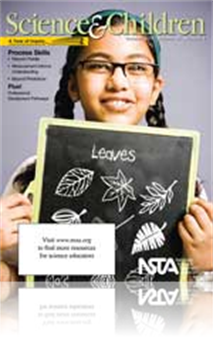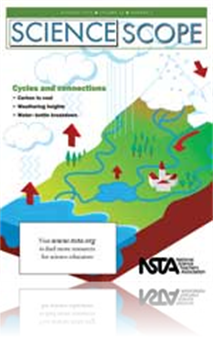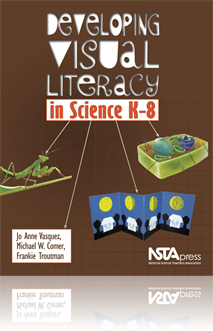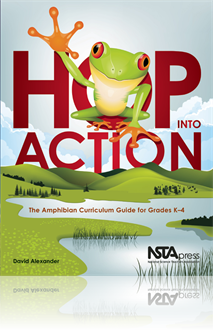All Resources
Journal Article
Career of the Month: An Interview With Medical Physicist John Winston
You have probably heard that radiation is used to combat cancer, but might be wondering how exactly this works. X-rays deposit a specified dose of high energy into the cancerous tissue. This damages the cancer cells’ DNA beyond repair, causing the ...
Journal Article
Self-regulated learning (SRL) encourages students to learn using metacognition, strategic action, and motivation. This nontraditional approach to education relies on the student’s active role in learning and the instructor’s facilitatory role in ...
Journal Article
For this issue’s “New Web Tools and Technology” theme, the authors thought it appropriate to showcase one innovative web project in depth. Ben Wildeboer, a science teacher in Connecticut, agreed to talk with them about student blogging and his ...
Journal Article
Science 101: How does loud noise affect hearing?
This is an appropriate question, especially in light of the recent news that the incidence of hearing loss in teens has been increased by a third. To understand how loud noise affects hearing, you need to know the basics of how your ear works. To und...
Journal Article
By thinking about the concept of density and taking into account the research on children’s ideas about this concept, the authors were able to unpack the typical sink or float activity and realize that it has students unscientifically making compar...
Journal Article
Editor’s Roundtable: Cycles and connections
Most middle level students are too young to recognize on their own the complex relationships among the natural cycles. They seldom connect one cycle with another nor do they see the relevance of the cycles to human events and natural phenomena so it ...
Journal Article
Science Shorts: Do You Hear What Horton Hears?
“I’ve never heard of a small speck of dust that is able to yell” says Horton of a sound he hears well (Geisel 1954). It is always valuable to connect science to student’s interests and their everyday world—so what better way to teach concep...
Journal Article
Green Science: Banning the bottle
Bottled water is ubiquitous, taken for granted, and seemingly benign. Americans are consuming bottled water in massive amounts and spending a lot of money: In 2007, Americans spent $11.7 billion on 8.8 billions gallons of bottled water (Gashler 2008)...
Journal Article
Editor’s Corner: New Tools for Learning
Technology has the potential to transform science education through online social network collaboration, satellite navigation and imaging, field and laboratory digital probeware, wikis and blogs, sophisticated online data sets, student response syste...
Book Chapter
As students try out visual literacy tools, they will begin to “see” concepts and build relationships among ideas by layering new information onto existing knowledge. This chapter is an overview of the concept of visual literacy and of the skill ...
Book Chapter
A single still photographic image can easily communicate a vast amount of information. A photograph can capture the meaning of a complex idea or concept that would require many pages of text to describe. This chapter provides you with strategies and...
Book Chapter
Students encounter a variety of diagrams in their lives that convey a variety of scientific and technical information. This chapter reviews the skills and techniques necessary for analyzing and interpreting diagrams of several levels of complexity. ...
Book Chapter
Creating Visual Thinking Tools
When we help students discover tools and techniques for organizing the vast amount of information presented to them, they will be much better prepared to recall, retell, or make meaning from text. In this chapter, the authors examine brainstorm webs...
Book Chapter
Three-Dimensional Graphic Organizers ("Foldables")
A foldable is a three-dimensional graphic organizer that allows learners to record and process new words and concepts in a hands-on, kinesthetic way. It helps increase students’ visual-spatial learning, which research has shown to be critical to lo...
Book Chapter
Visual Literacy in Life Science: Insect Metamorphosis
The authors invite you to come with them on a learning journey. Chapters 6, 7, and 8 are designed to help you practice your visual literacy teaching strategies. Even though each of these chapters follows the same format, each one addresses a differen...
Book Chapter
Visual Literacy in Physical Science: Force and Motion
Chapters 6, 7, and 8 are practice chapters. Each chapter provides the appropriate content standards for grades K-4 and 5-8 and several partial lessons and each follows the same format but addresses a different content area. This chapter addresses phy...
Book Chapter
In this chapter the authors show that “being literate” is no longer limited to reading and writing. Literacy has come to include much more, including the ability to access, analyze, evaluate, and communicate in a variety of forms. Visual literac...
Book Chapter
Understanding Force and Motion
The objects will not change position from their initial rest positions because the downward force on each side of the pulley (ignoring the weight of the string) is the same and the net force on each side of the pulley is zero. The gravitational attra...
Book Chapter
Understanding Floating and Sinking
Predict, Observe, Explain (POE) sequences provide an important way to enhance students' understanding of important scientific ideas. In this chapter, the series of experiments help students understand floating and sinking. The experiments include co...
Book Chapter
Predict, Observe, Explain (POE) sequences provide an important way to enhance students' understanding of important scientific ideas. In this chapter, the series of experiments help students understand solutions. The experiments include concepts such...
Book Chapter
Understanding Chemical Changes
Predict, Observe, Explain (POE) sequences provide an important way to enhance students' understanding of important scientific ideas. In this chapter, the series of experiments help students understand chemical changes. The experiments include concep...
Book Chapter
Predict, Observe, Explain (POE) sequences provide an important way to enhance students' understanding of important scientific ideas. In this chapter, the series of experiments help students understand living things. The experiments include concepts ...
Book Chapter
Understanding Life Processes in Plants
Predict, Observe, Explain (POE) sequences provide an important way to enhance students' understanding of important scientific ideas. In this chapter, the series of experiments help students understand life processes in plants. The experiments includ...
Book Chapter
Understanding Interactions of Living Things
Predict, Observe, Explain (POE) sequences provide an important way to enhance students' understanding of important scientific ideas. In this chapter, the series of experiments help students understand interactions of living things. The experiments i...
Book Chapter
Understanding Temperature and Heat
Predict, Observe, Explain (POE) sequences provide an important way to enhance students' understanding of important scientific ideas. In this chapter, the series of experiments help students understand temperature and heat. The experiments include con...
Book Chapter
Predict, Observe, Explain (POE) sequences provide an important way to enhance students' understanding of important scientific ideas. In this chapter, the series of experiments help students understand heat travel. The experiments include concepts su...
Book Chapter
Understanding Static Electricity and Magnetism
Predict, Observe, Explain (POE) sequences provide an important way to enhance students' understanding of important scientific ideas. In this chapter, the series of experiments help students understand static electricity and magnetism. The experiments...
Book Chapter
Understanding Current Electricity
Predict, Observe, Explain (POE) sequences provide an important way to enhance students' understanding of important scientific ideas. In this chapter, the series of experiments help students understand current electricity. The experiments include conc...
Book Chapter
Predict, Observe, Explain (POE) sequences provide an important way to enhance students' understanding of important scientific ideas. In this chapter, the series of experiments help students understand pressure. The experiments include concepts such a...
Book Chapter
Predict, Observe, Explain (POE) sequences provide an important way to enhance students' understanding of important scientific ideas. In this chapter, the series of experiments help students understand work and energy. The experiments include concepts...
Book Chapter
Predict, Observe, Explain (POE) sequences provide an important way to enhance students' understanding of important scientific ideas. In this chapter, the series of experiments help students understand light. The experiments include concepts such as ...
Book Chapter
Predict, Observe, Explain (POE) sequences provide an important way to enhance students' understanding of important scientific ideas. In this chapter, the series of experiments help students understand sound. The experiments include concepts such as ...
Book Chapter
In this lesson, students in grades K-2 will observe and discuss the characteristics of an amphibian and students in grades 3-4 will also collect and analyze data based on their observations. The objectives are to help students identify the physical c...
Book Chapter
In this lesson, students analyze the health of a pond through physical and biological analysis. The objectives are for students to be able to determine the health of a frog pond through investigation and inquiry and to describe macroscopic organisms ...
Book Chapter
In this lesson, students listen, imitate, and identify the calls of frogs and toads. The objectives are for students to be able to recognize and identify the calls and to explain that frogs and toads call to communicate....
Book Chapter
In this lesson, students simulate the feeding behaviors of amphibians by collecting “prey.” The objective is to identify the different feeding strategies of frogs....
Book Chapter
In this lesson, students use film canisters to follow scent trails that end at a pond or alternative final destination. The objective is for students to be able to describe how and why amphibians use their sense of small for odor communication....
Book Chapter
In this lesson, students create poetry using descriptive words from their observations. The objective is for students to be able to write poetry about amphibians....
Book Chapter
Ribbiting Discoveries in the Lily Pad Paper
In this lesson, students research interesting things about amphibians or things found around a frog pond to create a news article for the Lily Pad Paper. The objective is for students to write a journalism-style story describing the events at a frog ...
Book Chapter
In this lesson, students act as naturalists spending time documenting their observations by writing and sketching in journals over repeated sessions that span changing seasons. The objective is for students to observe broadly and focus closely to dis...









